Just like police, paramedics and the military, the old guard of the fire service are reporting difficulties in recruiting young firefighters, in part due to societal trends in physical fitness, but also because of changes to state pension benefits about a decade ago.
In Barnstead, a combination call and professional fire department, Chief Alfred Poulin said they have five of their six full-time positions filled after one was placed on administrative leave earlier this month. They’re able to fill the gaps, thanks to their call firefighters, and Poulin — himself a career firefighter — who are able to fill in as needed. But he stressed the difficulties smaller departments like his have in filling vacant positions and marketing the career to younger applicants.
“We do have a member that’s on administrative leave,” Poulin said, noting he can’t divulge details as to why, but said the broader problem in Barnstead and across the state is in recruiting and retaining firefighters.
“We’re like every other fire department in the state,” he said.
“Every fire department in the state has staffing issues because of the lack of qualified candidates.”
One barrier to entry for firefighter candidates is passing the Candidate Physical Ability Test, or CPAT, a physical fitness certification that runs candidates through simulations of real-world scenarios and work they’d be expected to perform.
“It’s not an easy test,” he said, noting sometimes the failure rate can be between 40% and 50%.
But an even bigger barrier is changes made to the state pension system by the legislature in 2011, which reduced benefits. In 2009, RSA 100-A was amended to reduce the 35% state subsidy of political subdivision employer contribution rates for teachers, police and firefighters in fiscal year 2010, then 25% in 2011.
In 2011, changes to the pension formula for new state employees and for those on the job less than 10 years ended the tradition of requiring firefighters to serve 20 years before being eligible for retirement benefits. Those changes are now the subject of a class action lawsuit against the state, which points to, among other items, the fact that a Group II, Tier B member with less than four years of creditable service as of Jan. 1, 2012, must work an additional four years beyond the originally anticipated 20 years in order to qualify, and will result in losses in pension benefits.
That group, subject to the lawsuit, includes about 1,600 active members and up to 200 retirees. That suit was filed Oct. 30, in Merrimack Superior Court, includes five named plaintiffs and asks the court to issue a declaratory judgment on the question, arguing the changes were tantamount to retroactive legislation, a bait-and-switch against affected employees who were hired under the old pension regime.
Competing with pay in larger departments is also a strain on smaller departments like his, Poulin said, noting younger firefighters often seek employment in bigger cities where there’s more action. Luckily, Barnstead has been able to rely on Lakes Region Mutual Fire Aid.
“We depend on mutual aid very heavily,” he said. “It’s worked very well in our area — it’s just hard to get people.”
All professional firefighters in the Granite State need a physical fitness certification through the CPAT in order be hired. The test, held in various locations but most recently at the New Hampshire Fire Academy in Concord, runs prospective firefighters through a gauntlet of challenges that test their abilities to perform the duties of the job in a simulation of actual circumstances they may encounter at a call to service.
Candidates begin the test on a stair machine while wearing a 75-pound vest. They climb for three minutes before moving on to the hose drag, designed to simulate dragging an uncharged hoseline from a fire truck to a scene. Candidates then complete the equipment carry — in Concord they performed something like a farmer’s carry with two chainsaws — then raise and extend a service ladder. Next, they simulate forcing entry into a building with a sledgehammer before crawling through a maze. Then they are tasked with dragging a 165-pound mannequin, simulating a rescue scenario, and finish the test with a simulation of gaining entry to a fire above the ceiling, using a pike pole to push a weighted door up and to pull a weighted device downward, approximating the process of pulling down a ceiling to access a fire.
There were more than 60 students registered for the test early Monday morning from all over New England. For some candidates, it was their first crack, while others had tried and failed once or multiple times before. Among the group were a wide range of ages.
Jack Hennings, 22, of South Berwick, Maine, attempted the test once before in October. He failed, realizing he needed to improve his cardio fitness. He increased the distance and frequency of training runs and hit the gym. Athletics weren’t new to Hennings; he played hockey growing up, in high school, and most recently on a club team.
Instructors on Monday ran Hennings through eight separate events and this time, he passed. He exited the large training center and vomited into a nearby tree line before sitting in a reception tent where instructors took his blood pressure and gave him an electrolyte sports drink.
“It feels better to throw up when you passed,” Hennings said to a nearby instructor, who laughed.
“The stairs,” he said, referring to the part of the test where candidates climb the stair machine with a weighted vest. “It feels like it’s never ending, just pushing through how gassed you are.”
But increasing his training in preparation for the test paid off, and this time he found success. He was able to get his firefighting certifications during high school, and is in EMT school now — he’ll finish that in about three weeks' time — so the CPAT was his last box to check before becoming eligible for full-time employment.
“You’re really just fighting, wanting to die,” he said. “It feels pretty good, accomplishing something.”
Nick Poulin, Manchester firefighter and Alfred Poulin’s son, is CPAT program coordinator at the state fire academy tasked with running candidates through the program. Professional firefighters from Lakes Region departments like Laconia, Belmont, Meredith and Plymouth attended the test and sought to recruit candidates to their firehouses.
Some were students at the fire academy, where they’re able to earn firefighting certifications and complete the CPAT, making them eligible for professional work, Nick Poulin said. Other candidates are volunteers working toward their professional certifications.
“We started off the day with orientation prior to the testing process,” Nick Poulin said.
At an earlier date of testing held at Merrill Fay Arena in Laconia, 83% of candidates passed, he said.
While acknowledging societal attitudes toward fitness and nutrition are contributing to a reduced number of qualified candidates for fire service, Nick Poulin reiterated points made by his father regarding legislative changes to the pension system. He said new candidates don’t have access to the same level of retirement benefits as their longer-serving peers, which may reduce the level of interest among young potential firefighters.
But candidates have control over their personal level of fitness. Nick Poulin said he’s noticed the level of fitness isn’t as good as it was in the past and pointed to habits regarding food and exercise. He recommended candidates look into fitness programs such as Crossfit in order to prepare for the CPAT.
“The CPAT is designed to mirror what you can expect,” he said.






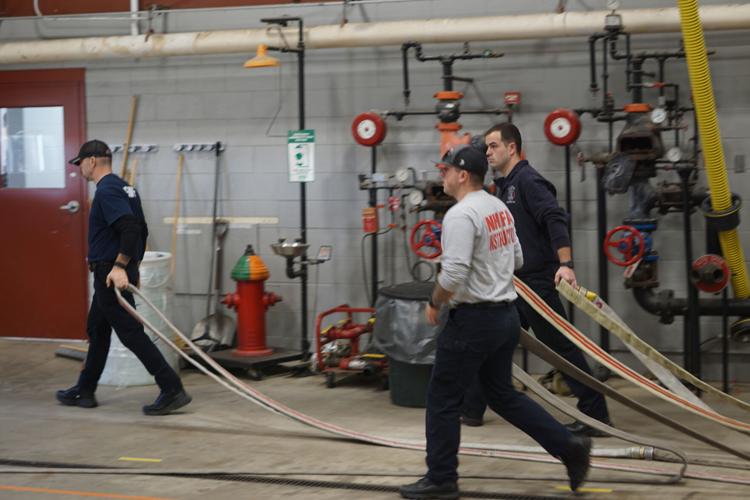
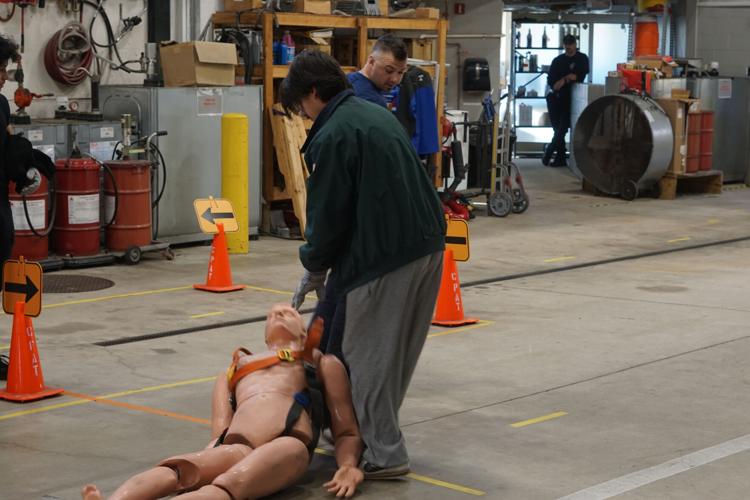
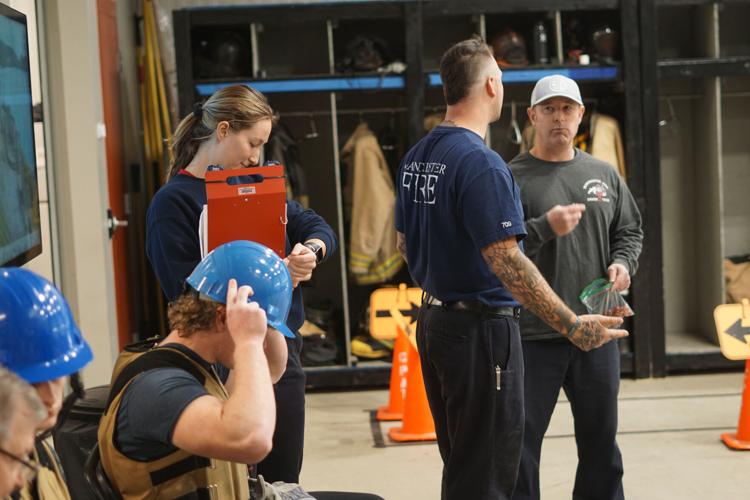
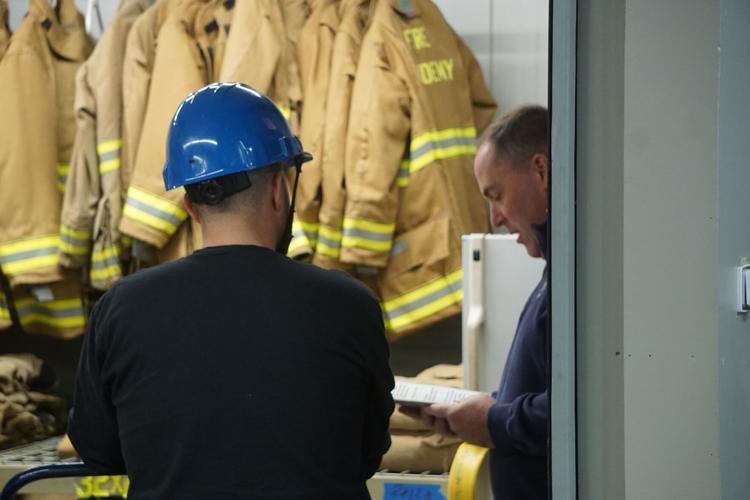
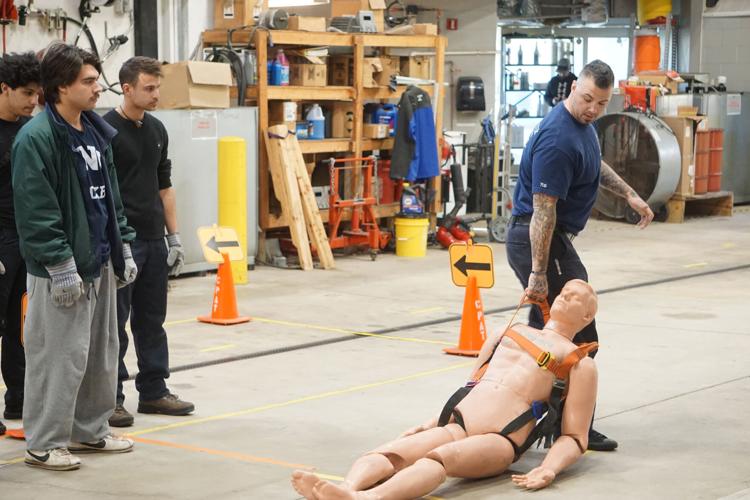
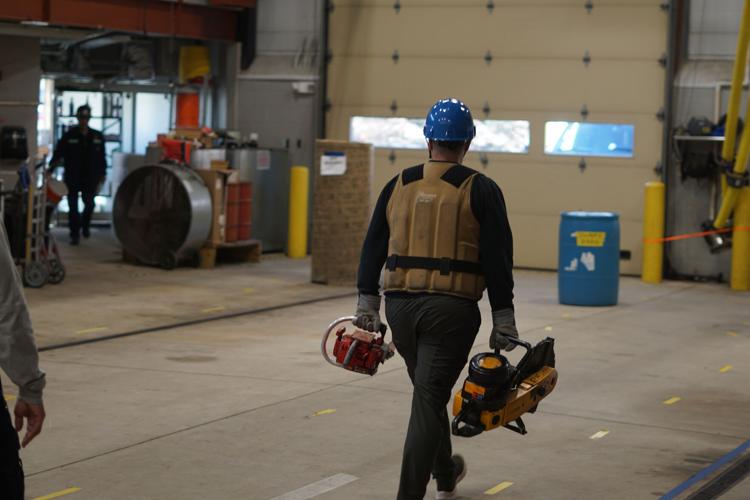
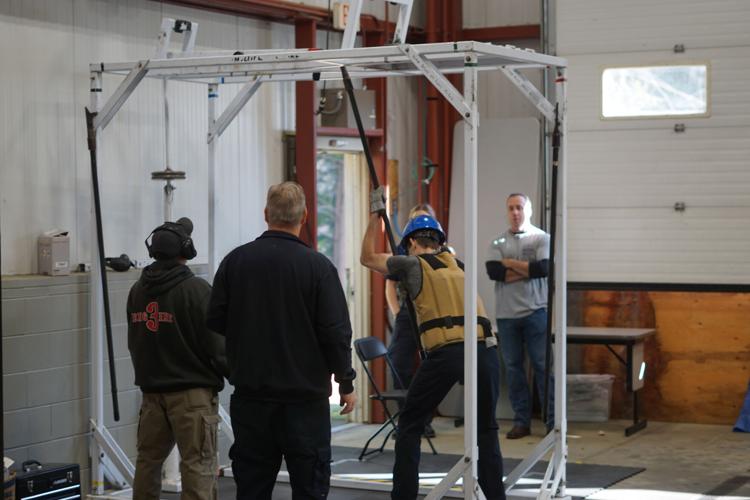
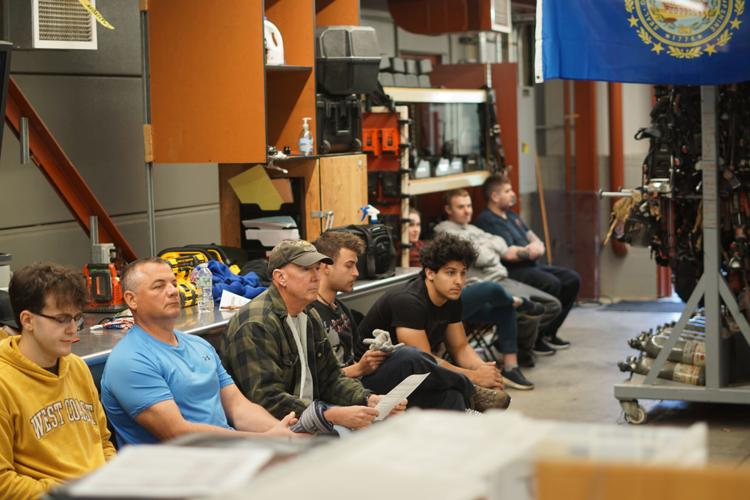
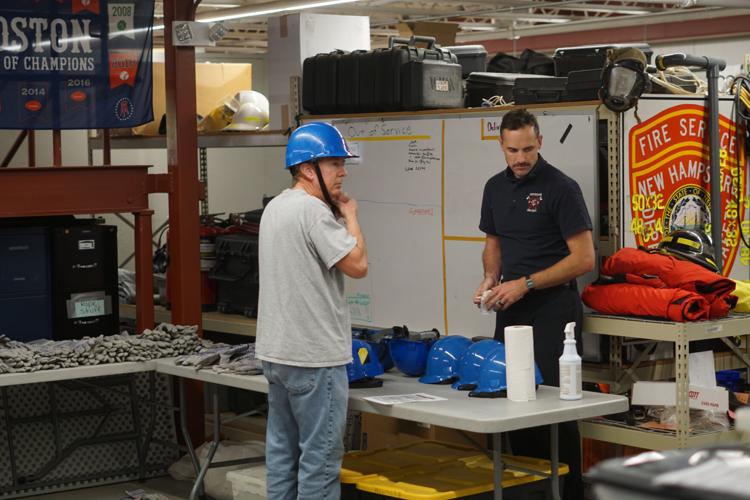
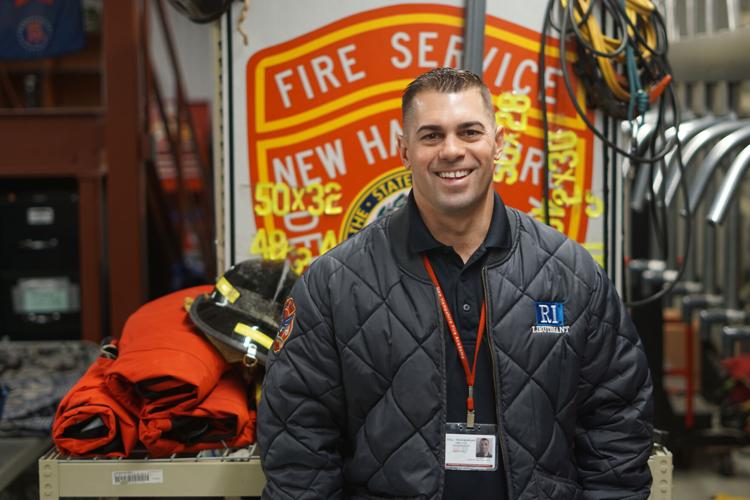
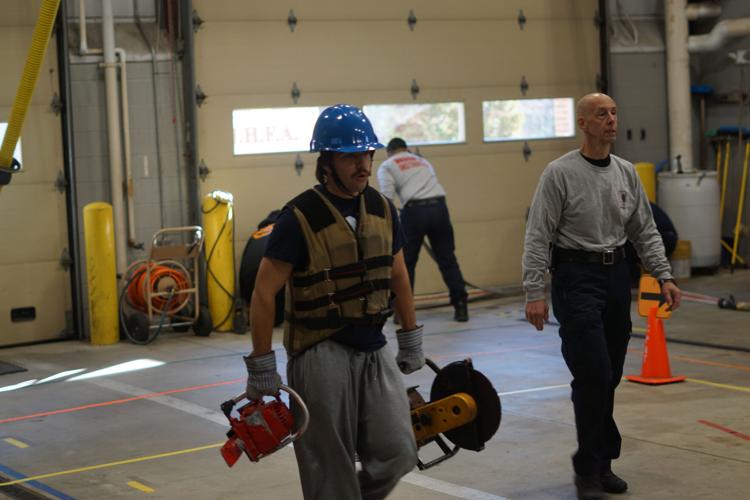
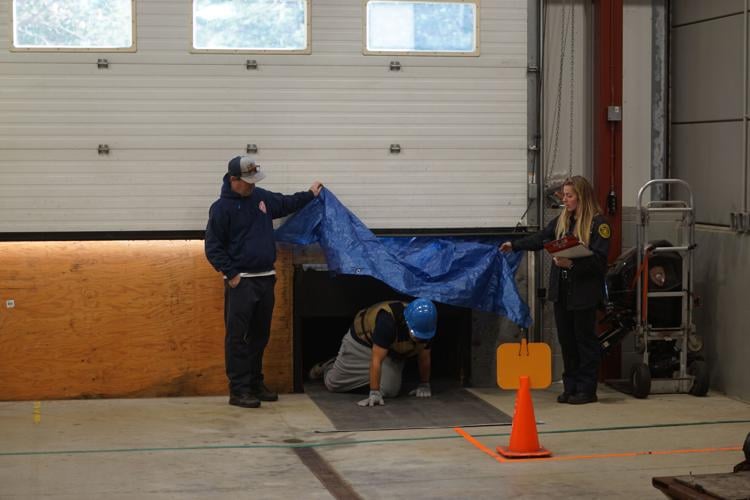



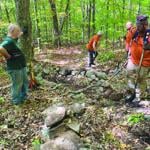
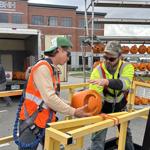




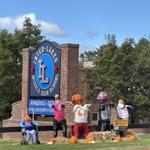
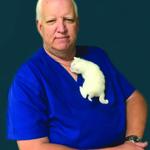
(0) comments
Welcome to the discussion.
Log In
Keep it Clean. Please avoid obscene, vulgar, lewd, racist or sexually-oriented language.
PLEASE TURN OFF YOUR CAPS LOCK.
Don't Threaten. Threats of harming another person will not be tolerated.
Be Truthful. Don't knowingly lie about anyone or anything.
Be Nice. No racism, sexism or any sort of -ism that is degrading to another person.
Be Proactive. Use the 'Report' link on each comment to let us know of abusive posts.
Share with Us. We'd love to hear eyewitness accounts, the history behind an article.